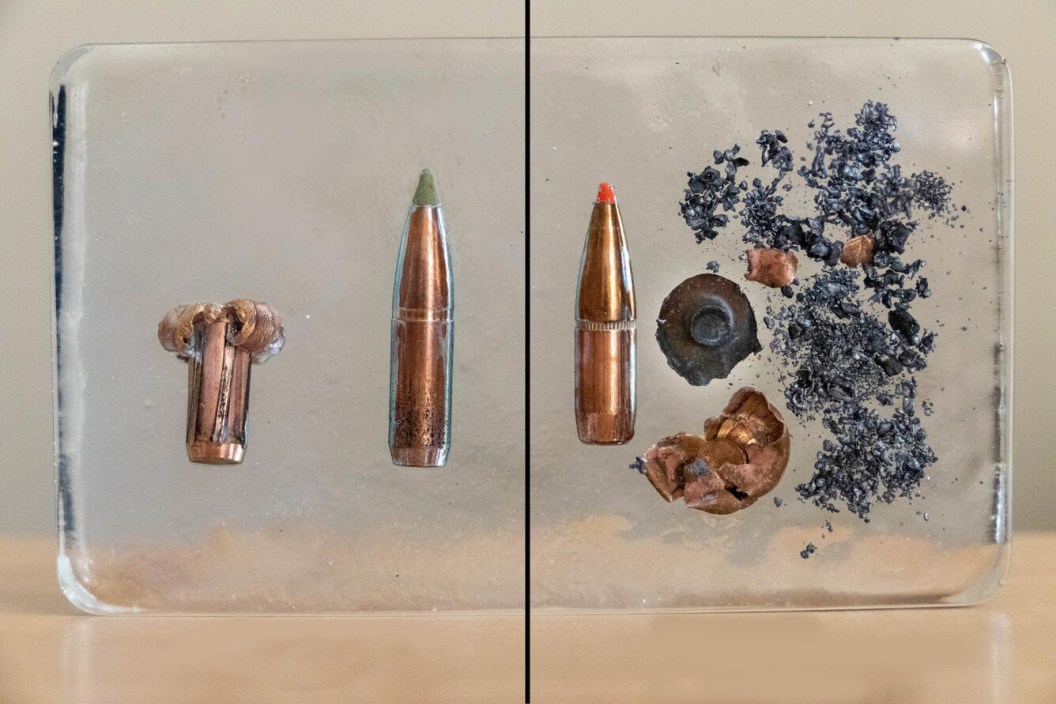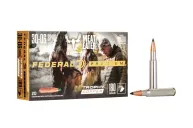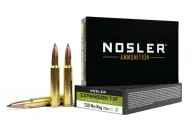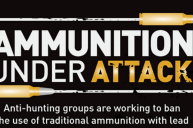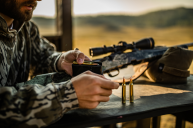At the end of 2023, the Fish and Wildlife Service (FWS) officially released a new order requiring hunters to use nontoxic ammunition in eight national wildlife refuges starting in 2026 as a part of President Biden's strategy to protect 30% of America's lands and waters by 2030.
This announcement was long expected and follows a growing trend poised to change the future of hunting. In July of 2023, the Minnesota Department of Natural Resources also announced lead ammo was banned in 56 of the state's Scientific and Natural Areas (SNAs) open to hunting. Meanwhile, Colorado lawmakers are considering a new bill to pilot a program wherein residents would receive, essentially, a rebate for purchasing non-lead bullets instead of lead. Overseas, the European Union is considering a complete ban of lead, including ammunition.
Historically, hunters have been able to use any ammo they desired in SNAs, which has predominantly meant they were using lead-based ammunition. Unlike the non-lead variety, lead ammo is widely available, very affordable, and has been well-researched by the military and ballisticians for its accuracy and performance.
However, a growing body of research, including studies from the Minnesota Department of Natural Resources, shows that lead ammo—also called toxic ammo—can build up within an environment and can unintentionally poison local wildlife.
While the scientific argument for keeping lead out of natural areas is strong (and growing every year), we don't have a great understanding of how effective non-lead ammo is at quickly and humanely harvesting an animal compared to its toxic alternative, raising concern among ethical hunters over more injured and maimed wildlife as non-toxic ammo becomes more widespread.
The Argument for Banning Lead Ammo and Switching to Non-toxic Ammo
This isn't the first time lead ammunition has come under fire. In fact, lead shot has been banned nationwide for hunting waterfowl since 1991 after multiple studies showed that waterfowl populations were suffering from lead poisoning. Waterfowl hunters are only allowed to use non-toxic ammo.
"Nontoxic shot is defined as any shot type that does not cause sickness and death when ingested by migratory birds," according to the U.S. Fish and Wildlife Service. The agency also provides a long list of federally-approved nontoxic shot options.
A 2019 research article in Ambio: A Journal of Environment and Society found that lead shot poisoning among birds had become widespread across the world, with some 1 million wildfowl dying in Europe from lead poisoning and another 3 million experiencing sub-lethal poisoning. The researchers noted this usually happened after the birds ingested spent lead gunshots or ammunition fragments embedded in their food.
"Lead ammo kills birds long after being fired from a gun," Sarah Greenberger, Audubon's vice president of conservation, said in an article by the California Chapter of the Audubon Society.
Since the 1991 lead ammo ban in the US, duck and goose populations have indeed increased. In 1997 alone, an estimated 1.4 million ducks were "spared from fatal lead poisoning" as a result of the ban. Additionally, 64% fewer Mississippi Flyway mallards died after lead ammunition was banned.
In addition to saving wildfowl lives, the 1991 ban helped nontoxic shot become more widely available; it's now offered in many shot sizes and shotgun gauges beyond just waterfowl hunting usage—for most any hunting firearm. That's great news for two reasons:
1. Lead ammo is toxic to wild scavengers.
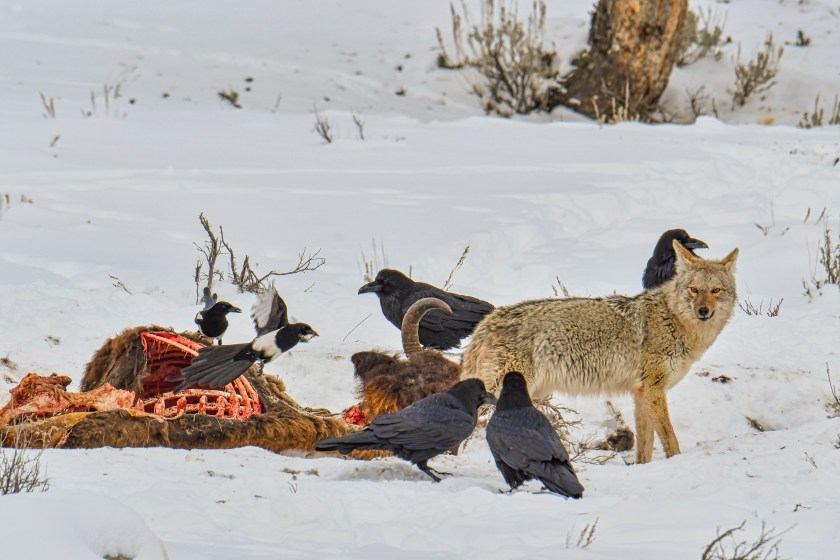
Getty Images, Sherri Castle
Just like waterfowl, other bird species and animals are vulnerable to lead poisoning. That's because scavenging and meat-eating species—eagles, vultures, ravens, coyotes, skunks, raccoons, and plenty more—often feed off the carcasses rifle hunters leave behind. But scavengers can't pick out the lead fragments from their easy meal. Instead, they ingest it and poison themselves.
Think about it: Most rifle hunters use ammo that's designed to "mushroom" upon impact—in other words, the ammo has a controlled tip expansion that blooms outward. Many rifle hunters view this as an ethical way to fill game tags because, as the bullet mushrooms out, more damage is done to the target, which increases blood loss and, in turn, decreases the amount of time an animal has to suffer before death.
However, it's very possible for tiny fragments of lead bullets to break off and spread throughout a carcass. Many big and small game carcasses killed with lead-based rifle ammunition contain lead ammo fragments.
2. It can also be toxic to you, the hunter, and your family.
In addition to being toxic to wildlife, lead is also toxic to humans. Hunters who shoot animals with lead ammo put themselves at risk; humans accidentally consume lead from hunted animals, just like some wildlife species. Lead fragments can be so small that humans don't even notice they're eating them.
In fact, Sporting Lead-Free, a non-political 501(c3) organization that advocates for reducing inadvertent lead exposure to humans and wildlife, which provides free meat screenings for game meat donation programs, scanned over 2,300 pounds of donated game meat between 2020 and 2022. It found 18% of the packaged ground game meat scanned contained at least one lead fragment.
There are countless risks to consuming lead, and that's why it's been outlawed in paint, pencils, and other products. Most recently, in 1975, leaded gasoline for vehicles was banned because it was a source of widespread lead poisoning.
Lead poisoning can result in intellectual disabilities, cardiovascular disease, and kidney disease. Young children are the most at risk of lead poisoning because they can absorb up to 5 times more lead than adults, leading to serious developmental issues, comas, and even death.
According to the Centers for Disease Control and Prevention, there isn't any known safe blood lead concentration. Blood lead concentrations as low as 3.5 micrograms per deciliter (a microgram is one-millionth of a gram, and a deciliter is one-tenth of a liter) can cause lowered intelligence in children, behavioral challenges, and learning issues.
The Argument Against Banning Lead Ammo and Switching to Non-Toxic Ammo for Hunting
We have a pretty solid understanding of the benefits of non-lead ammo. But what we don't have is solid information about what banning lead ammo will cost us. Here's what we do know:
1. There isn't as much research on non-lead ammo as there is for lead ammo.
We have a wealth of data available on the ballistic capabilities of lead ammunition which helps shooters make informed ammo-buying decisions, like choosing between soft-tipped ammo and hollow point ammo for hunting purposes.
However, the terminal performance of non-lead ammo does not have the volumes of data that lead ammo does simply because it hasn't existed as long as lead ammo.
More research needs be done on the expansive properties of nontoxic ammo, considering that a bullet's ability to expand can mean the difference between a wounded animal and a dead one.
2. Non-lead rifle ammo's different trajectory requires a learning curve for seasoned hunters.
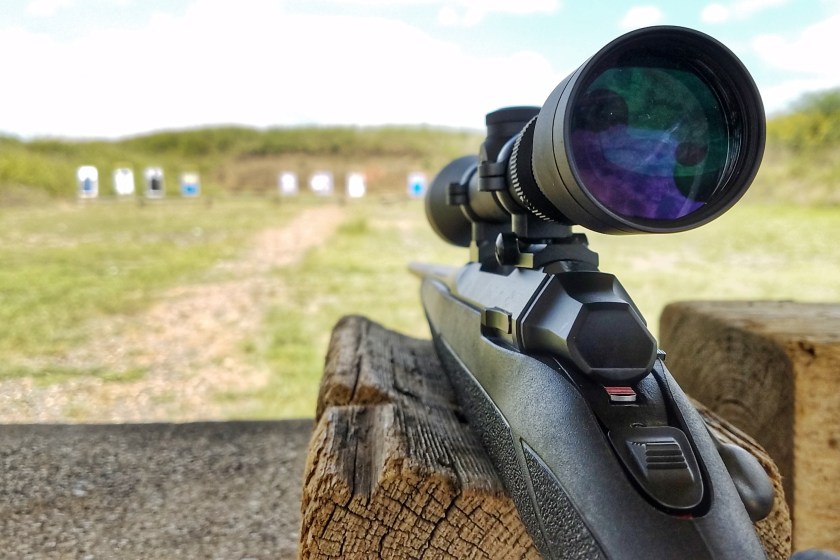
Getty Images, Russell Reynolds
Because lead and nontoxic bullets have differing metallic properties, they also have varying ballistic properties. Lead is a heavier metal than its nontoxic bullet alternatives, which means that nontoxic ammo is lighter than lead ammo.
When comparing two bullets with different weights, lighter bullets will be more susceptible to crosswinds, especially over 500 yards. Because of this weight difference, hunters will need to spend time at the range to adjust their shooting techniques to the new ammo.
This is, of course, very reasonable. Most hunters are regulars at the range already, but it does open the opportunity for a more painful learning curve in the field—as well as a more expensive one at the range, which leads us to...
3. Non-lead ammo is more expensive than lead ammo.
Lead ammunition is still the cheapest and most widely available kind of ammunition; for the 20 million Americans who are target shooters, the cost of buying ammo can really add up.
While a box of steel shot is usually $1 or so more than a box of lead shot, the difference between lead and non-lead rifle cartridges is bigger. For example, a box of lead Remington Core-Lokt .270 rounds is $36 while a box of Remington Core-Lokt Copper cartridges for .270s runs $52.
Where that price increase adds up: It's normal for target shooters to run through 100 rounds of ammo at the shooting range. Although hunters typically shoot fewer rounds than target shooters, it's quite common for hunters to use two or three boxes of rifle ammo to sight in their rifles as well as have extra ammo on hand for hunting season. For hunters, spending an extra $50 for the same amount of ammo is frustrating.
Additionally, making shooting sports more expensive will not help diversify or increase access to the hunting and target shooting communities. Shooting sports are already cost-prohibitive to many people.
What We Don't Yet Know In Lead vs. Non-Lead Ammo
Because there hasn't been much research done on non-toxic ammunition, we don't have answers to two very important questions, although one avid hunter's personal research does shed some light on these questions not being an issue.
1. Is non-lead ammo just as accurate from a distance as lead ammo?
Lead is a very soft metal. It's easy for lead bullets and shot to change shape and lose mass upon impact, according to ballistic tests done by Sporting Lead-Free.
Meanwhile, non-toxic rifle ammo, typically made of several types of alloys, and nontoxic shotgun shells, made from steel, bismuth, tungsten, and other metals, have different properties than lead, affecting an ammo's ballistic efficacy. For example, a steel shot is much denser than lead and therefore exits the barrel of a shotgun differently. Additionally, the nontoxic shot must be bigger in diameter than the lead shot to weigh the same amount.
AJ DeRosa, the Creative Director of Project Upland, an upland bird hunting magazine, argued that, despite these differences, steel is plenty effective to successfully down upland birds up to 45 yards away. That's about as far as an upland hunter ever shoots at a bird, so no issue there.
But since non-toxic bullets are lighter than lead bullets, that weight may alter its ability to create a well-placed wound channel when compared to its toxic alternative.
Justin Spring, Boone and Crockett's Director of Big Game Records, has conducted his own lead vs. non-lead experiments in rifle ammo. Spring says he considers rifle ammo effective for big game hunting only if he is able to shoot a 5-shot, 2-inch group on a target placed at 200 yards. He found that his nonlead ammo was capable of doing just that.
2. Does non-lead ammo kill as humanely as lead ammo?
When it comes to ethical hunting, the lead ammo rifle hunters often favor are designed to mushroom upon impact, maximizing damage and increasing the speed of blood loss, thereby decreasing suffering for the animal.
Because non-lead ammo is harder than lead, it's better at retaining its shape upon impact. This decreases fragmentation and increases both penetration and a bullet's ability to mushroom or petal. "[Nonlead bullets] expand rapidly and provide terminal performance as good or better than their lead counterparts... a good non-lead bullet will petal and retain its weight," said Justin Spring, Boone and Crockett's Director of Big Game Records.
If it's your first time shooting nonlead ammo, be sure to practice shooting it at the range to best understand your nontoxic ammo's functionality in the field.
The Bigger Picture Concern of Lead Ammo Bans
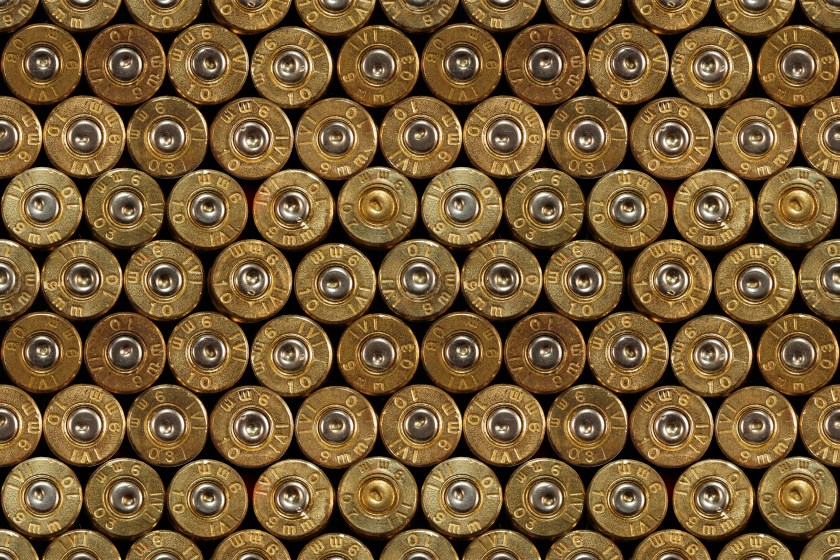
Getty Images, bermau
When talking about lead ammunition bans, there are two conversations happening simultaneously:
- The argument for banning lead ammunition for hunting purposes in state or national wildlife areas to protect wildlife against lead poisoning.
- That banning lead ammunition in wildlife areas will open the floodgates to a national ban of lead ammo for all shooting purposes, including target shooting and personal defense ammunition.
As hunters for the purpose of conservation, most of us can agree that restricting the use of lead ammo in sensitive wildlife areas is a good thing. But the larger implication of the growing frequency of regional bans is that this will give the federal government the fuel it needs to ban lead ammunition nationwide. And when it comes to whether lead ammo should be restricted in every wild place, it's a bit more complicated.
Many in the hunting community are concerned about less tax money for wildlife conservation or how the ban could hurt small industries around lead ammo clean-up. And if the ban does affect the Pittman-Robertson Act (PRA) funding, which currently is our main bank behind wildlife conservation, we as an outdoor community may have to start to pay a tax on other outdoor recreation items, similar to the "Backpack Tax" that has vehemently been opposed by many in the outdoor industry.
But at the moment, we really just don't know enough about how a federal lead ammo ban would affect wildlife conservation funding. And there's certainly a likelihood the taxes currently on lead ammo would just transfer over to non-lead ammo, thereby not affecting conservation funding at all.
Furthermore, we also don't have enough (or any) science behind whether non-lead ammo performs as effectively, efficiently, and humanely.
Hopefully, the development of nontoxic ammo options will continue to be developed by manufacturers and the broader firearms and ammunition industry. Increased numbers of affordable options, effective velocities and mass properties among nontoxic options, and greater market availability would make all hunters' transitions to nontoxic ammunition smoother.
What we do know: The action being taken and conversation being had around lead ammo bans is, at this moment, only around expanding a ban of toxic ammo in SNAs — and the research we do have says that is a win-win for wildlife conservation and wildlife alike.
